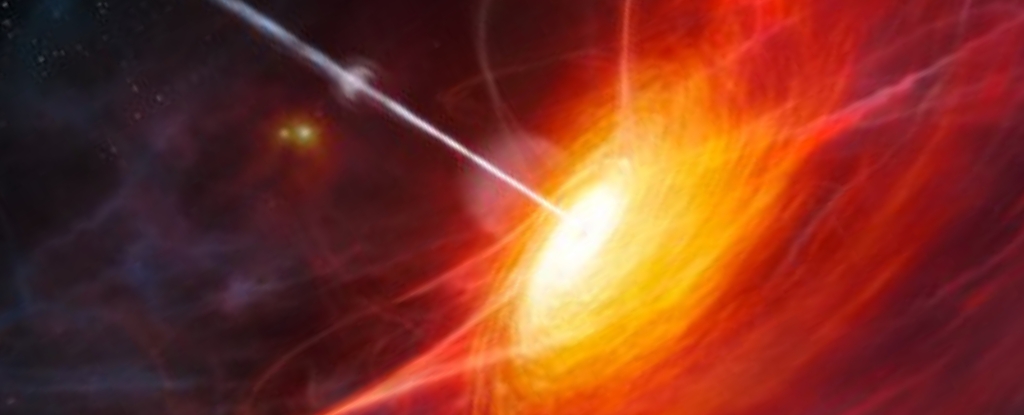
Recent observations have revealed a significant reduction in the mass of the universe’s brightest quasar, known as J1342+0928. This quasar, situated approximately 13 billion light-years away, has experienced a dramatic decrease in mass, shrinking by nearly 90% due to a powerful outflow of gas. The study was conducted by researchers at the University of California and led to insights that could reshape our understanding of quasar dynamics and black hole growth.
The findings were published on March 15, 2024, in a report detailing the quasar’s outflow, which has been described as “blazing.” This outflow is thought to be a key factor in regulating the mass of the black hole at the center of the quasar, suggesting that such phenomena play a critical role in the evolution of supermassive black holes.
Understanding the Impact of Cosmic Outflows
Quasars are among the brightest objects in the universe, powered by supermassive black holes that can contain millions or even billions of solar masses. The quasar J1342+0928, prior to this discovery, was estimated to have a mass comparable to that of the largest known black holes. However, the recent findings indicate that intense outflows can strip away vast amounts of material from the surrounding accretion disk, leading to a significant reduction in mass.
Researchers utilized data from the NASA space telescope to analyze the light emitted by the quasar. The outflow’s strength suggests that it is capable of ejecting material at speeds exceeding 2,000 kilometers per second. This discovery prompts important questions about the lifecycle of quasars and the mechanisms through which they evolve over time.
Implications for Black Hole Research
The implications of this research extend beyond the quasar itself. The interaction between outflows and black holes can inform scientists about how galaxies form and evolve. As black holes grow, they influence their surrounding environments, and understanding the dynamics of these outflows could unveil secrets about cosmic evolution.
The research team emphasized that this phenomenon is not isolated to J1342+0928. Similar outflow patterns have been observed in other quasars, indicating a potentially universal mechanism at play. The study highlights a need for further research to explore the relationship between quasar outflows and black hole growth across the cosmos.
In conclusion, the dramatic mass reduction of J1342+0928’s black hole challenges previous assumptions about quasar behavior and paves the way for new explorations in astrophysics. As researchers continue to investigate the complexities of these cosmic giants, the insights gained could significantly enhance our understanding of the universe’s history and structure.







